Pyrenean Mastiff: Dog Breed Characteristics & Care
The Pyrenean Mastiff, also known as the Mastín del Pirineo, is a large, fluffy-haired breed originally from the Pyrenees mountains in northeastern Spain. Noble, affectionate, and confident, this dog is the definition of “gentle giant.” Pyrenean mastiffs are considered to be among the rarest—and oldest—breed, dating back roughly 3,000 years. They have a lengthy history as working dogs, specifically livestock guardians, protecting sheep from wolves and bears.
In addition to being incredible guardians and watchdogs, Pyrenean mastiffs are slobbery sweethearts who are extremely devoted to their people and are great with kids and other pets, making them excellent family dogs. Learn more about the care and characteristics of this giant breed.
Breed Overview
GROUP: Working
HEIGHT: 30 to 31 inches (males); 25 to 30 inches (females)
WEIGHT: 130 to 240 pounds
COAT: Medium-length double coat
COAT COLOR: White with patches of beige, biscuit, black, golden, gray, brown, or silver
LIFE SPAN: 10 to 13 years
TEMPERAMENT: Gentle, loyal, intelligent, alert, loving, courageous
HYPOALLERGENIC: No
ORIGIN: Spain
Characteristics of the Pyrenean Mastiff
The massive Pyrenean mastiff is a calm, good-natured companion, according to De La Tierra Alta Kennels, the first importers and breeders of the Pyrenean Mastiff in the United States. Because of their history as livestock guardians, they're naturally protective of their family and make exceptional watchdogs. Though they don't bark much, they're a bit cautious of strangers and will be sure to alert their people upon seeing one if they feel the need to. Pyrenean mastiffs may be a more suitable option for an experienced pet parent, or a new one who's committed to learning about the breed and providing them with the proper care they need to thrive.
| Affection Level | High |
| Friendliness | Medium |
| Kid-Friendly | High |
| Pet-Friendly | High |
| Exercise Needs | Medium |
| Playfulness | Medium |
| Energy Level | Low |
| Trainability | Medium |
| Intelligence | High |
| Tendency to Bark | Low |
| Amount of Shedding | Medium |
History of the Pyrenean Mastiff
The Pyrenean mastiff originated during the Middle Ages in the kingdom of Aragon, an area we now know as northeastern Spain. They're thought to be a descendant of molosser dogs the Phoenicians brought from Sumeria and Assyria to Spain over 3,000 years ago, according to the Pyrenean Mastiff Association of America (PMAA). Back then, molosser dogs like the Pyrenean mastiff worked as farmers' right hand dogs, protecting flocks of sheep from predators and thieves. They even guarded houses, farms, and castles, according to the Pyrenean Mastiff Club of America (PMCA). Pyrenean mastiffs were undoubtedly beloved for their ability to be both strong, confident, and self-reliant workers, as well as charming, friendly, and noble companions.
However, the Pyrenean mastiff breed nearly faced extinction in the 1930s and 1940s. At the time, wolves and bears were disappearing from the Pyrenees mountains, leaving the breed with no job to do, there was a newly-founded reliance on rail to transport sheep, and the people of Spain faced a scarcity of food following the Spanish Civil War and World War II.
Fortunately, wolves returned to the area in the 1970s, putting the dedicated Pyrenean mastiff back to work. Equally devoted Spanish dog breed enthusiasts worked just as hard to revive the breed and as a result, founded the Club del Mastín del Pirineo de España (Spanish Pyrenean Mastiff Club) in 1977.
It wasn't until 1996 that the Pyrenean mastiff made their way to the United States. And though the American Kennel Club (AKC) has not yet officially recognized the breed, the Pyrenean mastiff has been a part of the Foundation Stock Service since 2014. The PMAA estimates that there are between 4,000 and 6,000 Pyrenean mastiffs around the world. Today, they are often found in rural areas.
Pyrenean Mastiff Care
Pyrenean mastiffs have medium-length hair with a dense double coat. They shed a moderate amount and especially in spring and autumn. According to the AKC, they should be brushed at least three times a week (ideally, every day if possible) and bathed when needed, likely every few months. While Pyrenean mastiffs are generally low maintenance, you can expect to clean up lots of drool from these wonderful woofers.
Exercise
Because Pyrenean mastiffs are working dogs, they need enough exercise and enrichment to put their bodies and minds to work. An hour of daily low-impact exercise and training works great for this big breed at any age, from slow strolls around the neighborhood to nose work in a fenced backyard. As Pyrenean mastiff puppies grow up to be big and strong, it’s important that they exercise and play on soil or other cushioned surfaces since concrete is hard on their soft bones.
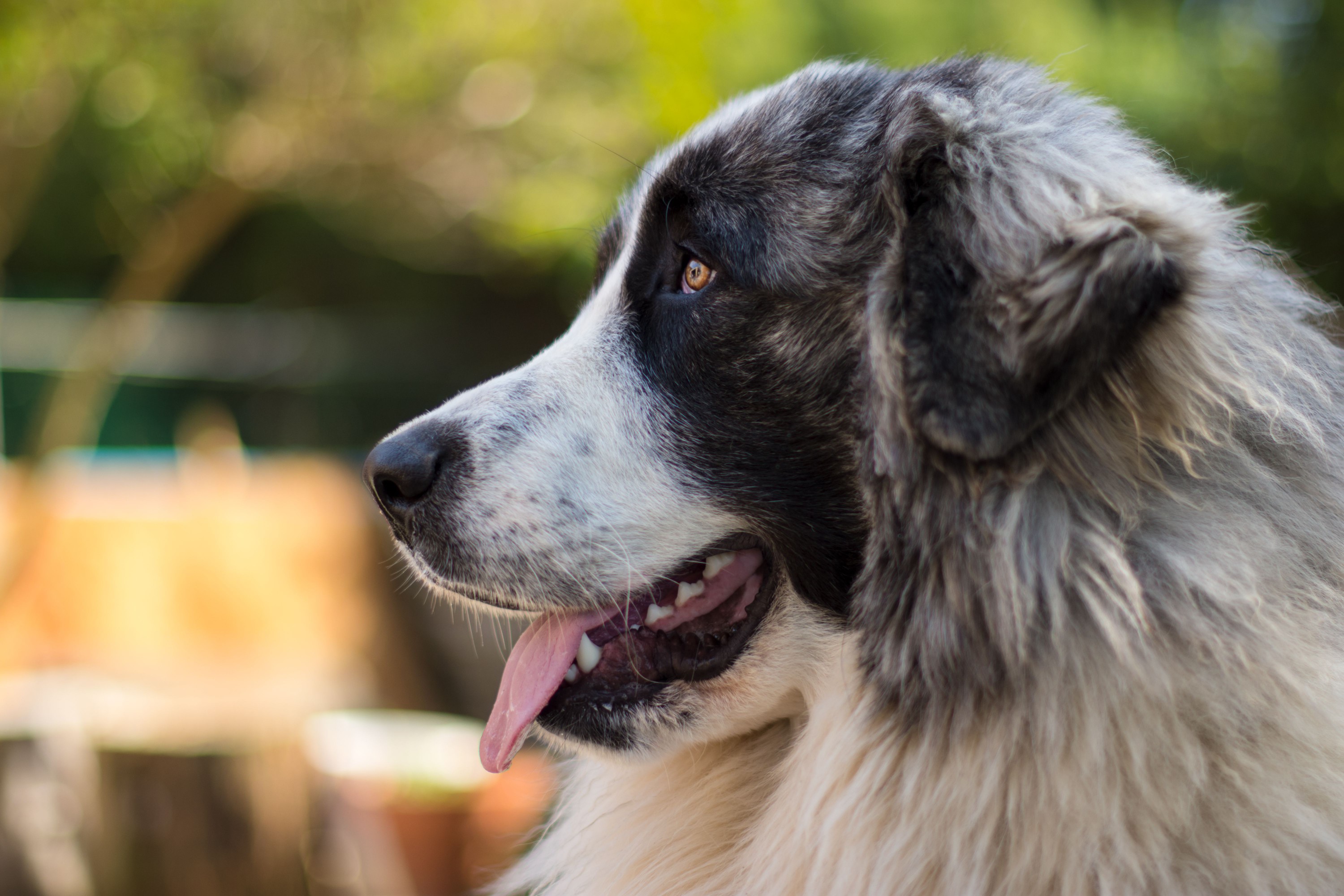
Alzala89 / Getty Images
Grooming
When it comes to grooming, the Pyrenean mastiff isn’t considered to be high maintenance but does require some care. With a coat as thick and fluffy as theirs, it may come as no surprise that they need frequent brushing, around every 2–3 days to prevent mats and tangles. An undercoat rake brush or slicker brush can come in handy for brushing.
Pyrenean mastiffs shed moderately throughout the year, and because they have a double coat, they shed—or “blow coat”—heavily twice a year. It’s important to mention that their double coat should never be shaved because it keeps them cool in the summer and warm in the winter.
Pyrenean mastiffs don't require frequent bathing and can be bathed as needed. Their thick nails, including dewclaws, should be trimmed regularly. They should also have their teeth brushed and floppy ears checked and cleaned routinely.
Training
Pyrenean mastiffs are generally easy to train. Though they can be a bit independent, they're eager to please and make their person proud. Because mastiffs typically take a little longer to mature mentally (usually around two years old), it’s encouraged to set this big breed up for success with socialization and desensitization and around four months old, as well as basic obedience training around nine months old.
Pyrenean mastiffs have a low prey drive and get along with children and small animals alike since they were bred to be guardians. However, it’s ideal to get all family members acquainted and show both kids and canines how to interact safely around the other.
Training with positive reinforcement and treats is the best way to train a Pyrenean mastiff. Be sure to watch how many treats you give them though since they’re prone to weight gain. It's best to crate train your Pyrenean mastiff as a puppy so that they learn that they have a safe place to rest and retreat. Keep them mentally preoccupied by giving them a KONG stuffed with peanut butter or an interactive puzzle toy.
When it comes to training, the same applies to all breeds: consistency is key!.
Common Health Problems
Responsible breeders strive to maintain the highest breed standards. However, like any breed, some hereditary health problems can occur. Conditions to be aware of include:
- Gastric Dilatation-Volvulus (GDV): Also known as bloat, GDV is common in large dogs with deep chests. It can be life-threatening in severe cases where volvulus occurs.
- Hip Dysplasia: A malformation of the hip sockets, which can lead to pain and arthritis
- Panosteitis: An orthopedic condition in puppies, also known as “growing pains”
- Eye Conditions: Deep-set eyes like a Pyrenean mastiff's are prone to entropion, ectropion, and infections.
Diet and Nutrition
A Pyrenean mastiff needs high-quality dog food to grow big and strong. An age appropriate diet is key no matter the breed. As a puppy, a Pyrenean mastiff should be on a high-protein, large puppy food approved by the Association of American Feed Control Officials (AAFCO). According to the PMAA, they should be fed three times a day until they reach six months old, then switch to twice a day.
Some Pyrenean mastiff breeders suggest feeding a kibble with calcium at .8–1.5 and phosphorus at .6–1.2. They’ll eat plenty between 9 and 18 months old and should be fed puppy food until they reach 18 months (for females) and two years old (for males). A Pyrenean mastiff will eat about three cups of food a day.
Make sure your Pyrenean mastiff always has access to fresh, clean water.
Where to Adopt or Buy a Pyrenean Mastiff
A Pyrenean mastiff puppy can cost anywhere from $2,000–$5,000 depending on the breeder. Before bringing this gentle giant home, make sure you have plenty of space both in your home and backyard since they grow to such a massive size.
A few places to start on your search for a Pyrenean mastiff include:
- Palmetto Pyr Haven
- Estrella Polar Pyrenean Mastiffs
- Pyrenean Mastiffs of the Northwoods
- Élevage Sherpa (Canada)
You can also check the PMMA for more places to find Pyrenean mastiffs. It’s always a good idea to check your local animal shelters and rescue groups as well to see if any Pyrenean mastiffs are in need of a home.
Pyrenean Mastiff Overview
Calm, loving, and devoted
Loves to be around their family, including kids and other pets
Intelligent and independent
Needs a home with lots of space and a fenced-in yard due to their size
Can gain weight easily if not getting enough daily exercise
Sheds a moderate amount and requires frequent brushing
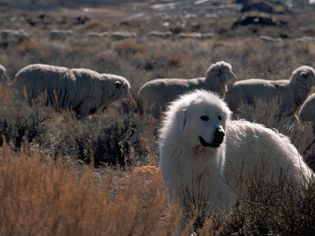
More Dog Breeds and Further Research
If you’re interested in breeds that are similar to the Pyrenean mastiff, check out:
- Great Pyrenees
- Saint Bernard
- Leonberger
- Perro de Presa Canario
- What is the difference between a Great Pyrenees and a Pyrenean Mastiff?
While the Great Pyrenees and Pyrenean mastiff are both great breeds that are similar in origin and history, Pyrenean mastiffs are bigger, tend to bark less, and have fewer health issues.
How much does a Pyrenean Mastiff cost?When purchased from a reputable breeder, a Pyrenean mastiff could cost anywhere from $2,000 to $5,000. If you adopt a Pyrenean mastiff from a shelter or rescue, the cost will be less in comparison and may cost up to a few hundred dollars.
Are Pyrenean Mastiffs good pets?Yes! Pyrenean mastiffs are known for being gentle giants and make fantastic family dogs, getting along with people and animals alike. They’re affectionate, calm, intelligent, and vigilant.
RECOMMENDED NEWS

How to Help a Dog Giving Birth for the First Time
If your dog is close to giving birth for the first time, it's important to prepare yo...

Ear Mites in Puppies and Dogs
Ear mites are extremely contagious, and puppies often catch them from their mother or whe...

Why Do Dogs Pant?
It may seem like your dog is panting for no reason, but panting is a common dog behavior ...

Pointer: Dog Breed Characteristics & Care
The pointer is a medium-size sporting dog breed from England with a short, smooth coat th...

Pudelpointer: Dog Breed Characteristics & Care
The pudelpointer is a medium-sized dog breed known for their playful personality and robu...

Everything You Need to Know About Service and Assistance Dogs
You have probably heard the terms service dog and assistance dog before, but do you know ...
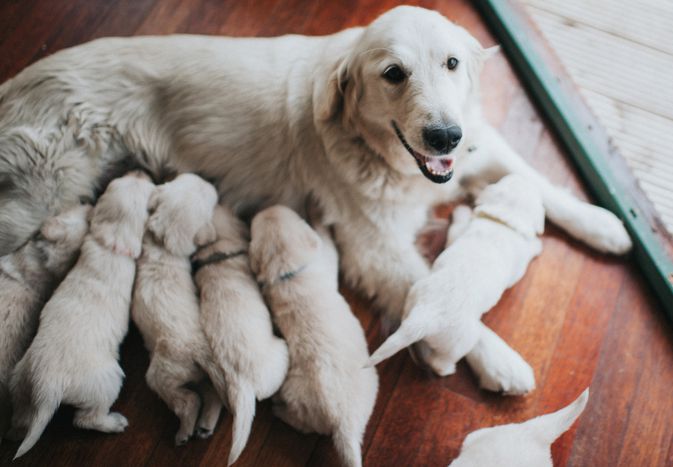
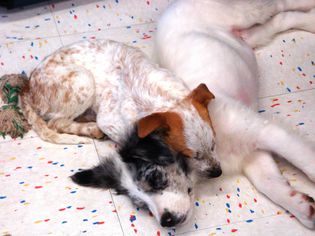


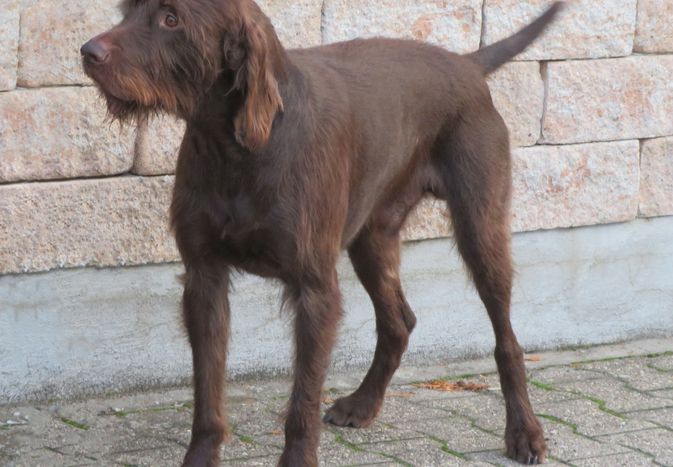
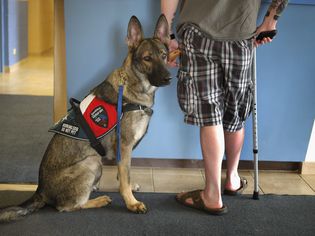
Comments on "Pyrenean Mastiff: Dog Breed Characteristics & Care" :